Mexican Sour Gherkins, also known as Mouse Melons, Cucamelons, or Sour Gherkins, belong to the Melothria genus. Mexican Sour Gherkins are a type of cucumber native to Mexico and Central America.
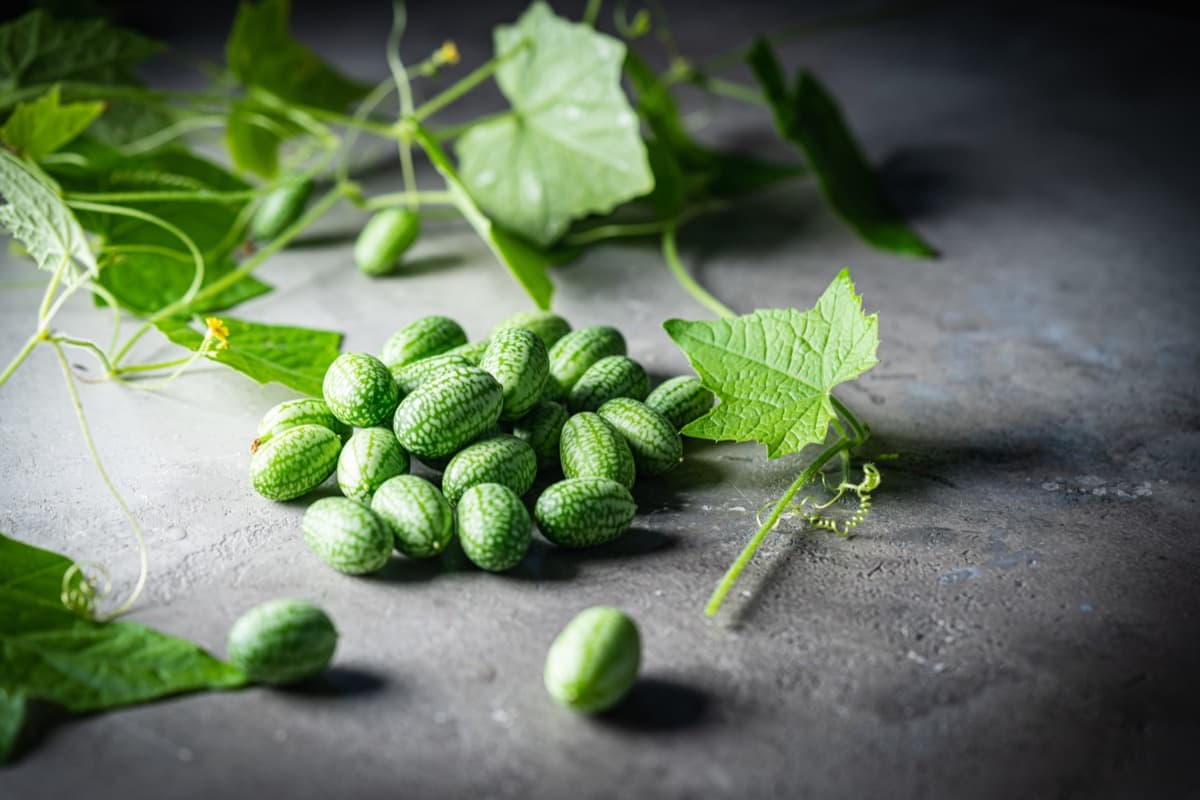
How to Start Mexican Sour Gherkin/Cucamelon Farming
Soil Requirement to Start Mexican Sour Gherkin Farming
- Soil pH level is among the most important factors in growing Mexican Sour Gherkins. The ideal range for these plants is between 6.1 to 6.8, which means you’ll need slightly acidic soil for optimal growth.
- In addition to pH levels, it’s crucial to ensure your soil type is humusy-rich and well-drained. This will help prevent waterlogging and root rot while providing plenty of nutrients for your Gherkin plants.
- To ensure that your soil is suitable for growing cucamelons, it’s advisable to conduct a soil test before planting. This will help you determine the nutrient levels and pH balance of your garden bed or potting mix.
- If the soil in your garden bed lacks proper drainage, adding organic matter such as compost or aged manure can improve its structure and water-holding capacity. Another option is to grow Cucamelon in raised beds or containers filled with high-quality potting mix enriched with compost or other organic nutrients.
Light Requirement to Start Mexican Sour Gherkin Farming
Light is a crucial factor when growing Mexican Sour Gherkins. These plants require plenty of sunlight, ideally 6 to 8 hours daily. It’s best to plant them in an area that receives full sun exposure for most of the day. If you’re planting your Mexican Sour Gherkins indoors or in a greenhouse, ensure they can access natural light or use LED grow lights.
Avoid placing them near shaded areas or under direct artificial lighting, as this can cause stunted growth and affect their overall health. On the other hand, too much direct sunlight can also harm your plants. If you live in an area with intense heat during peak summer months, consider providing shade during midday hours using shade cloth or planting taller crops nearby that will provide partial shade.
In case you missed it: How to Grow and Care for Coral Vine Plants (Mexican Creeper): A Beginners Guide
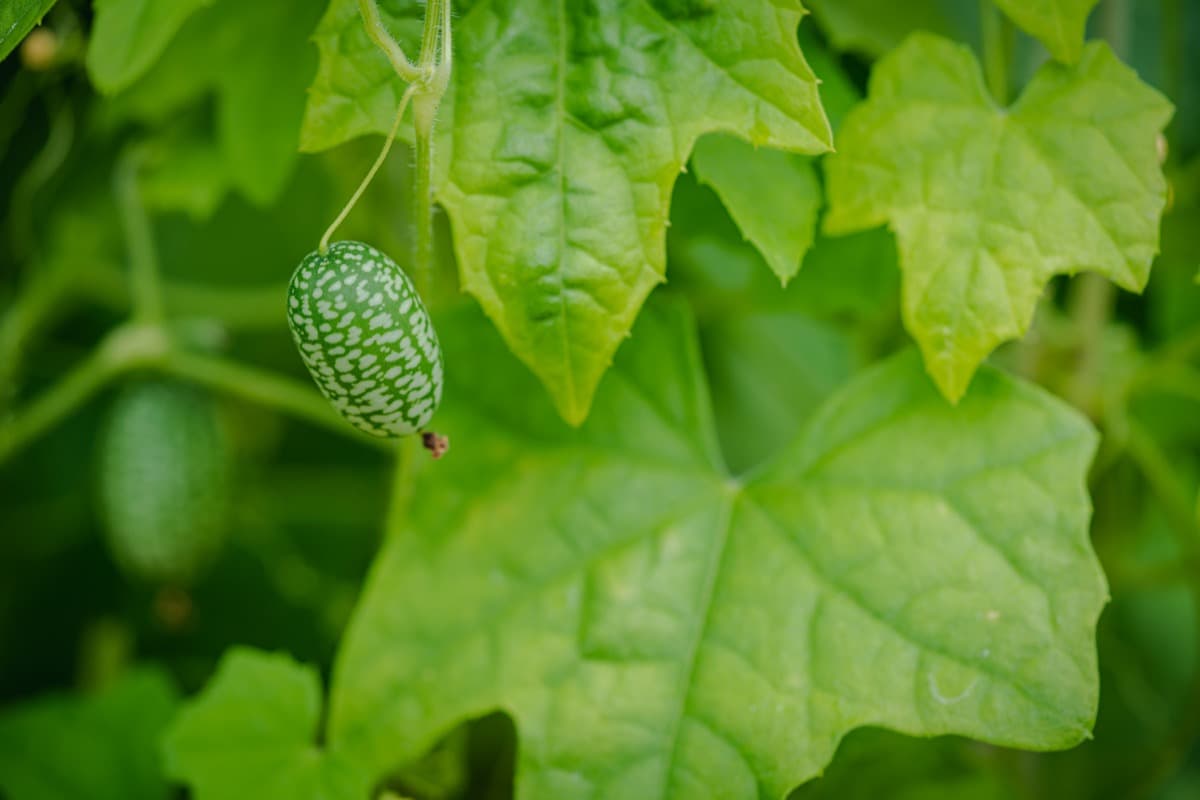
Tips to Start Mexican Sour Gherkin Farming
- Growing Mexican Sour Gherkins can be a unique and exciting addition to any garden. Not only are they visually appealing with their tiny watermelon-like appearance, but they also have an unusually Sour taste that sets them apart from other cucumbers.
- Farming Mexican Sour Gherkins is eco-friendly since they don’t require harmful pesticides or chemicals to thrive. To start, choose an area with full sun exposure and well-drained soil rich in organic matter.
- Cucamelon has been gaining popularity recently because of its unique appearance and taste. It has a refreshing crunch with hints of tanginess and sweetness, making them perfect for snacking or adding to salads.
- Once you have found the perfect spot, it’s time to prepare the soil. Test the pH level of your soil, which is slightly acidic. You can then amend any issues with lime or sulfur depending on whether your soil is too acidic or alkaline.
- The next step is planting your Mexican Sour Gherkin seeds directly into the ground or starting them indoors a few weeks before transplanting them outside after all frost has passed. Space each plant at least 18 inches apart to give them enough room to grow.
- Mexican Sour Gherkins prefer consistent moisture levels but be careful not to overwater as they can become susceptible to root rot in waterlogged soils.
- Support such as trellises or cages will help keep plants upright while increasing air circulation around leaves and fruit.
- Make sure you choose the right location for planting your crop. Mexican Sour Gherkins thrive in warm weather with plenty of sunlight and well-draining soil.
- Another important rule is to avoid overwatering your plants. While they require regular watering, too much water can lead to root rot and other issues. Monitor the soil’s moisture level carefully and adjust your watering schedule accordingly.
- Additionally, providing adequate support for your plants as they grow is essential. Mexican Sour Gherkins are vining plants that can quickly get out of control if not properly trained or supported. Trellises or stakes are excellent options for keeping them upright and organized.
- Don’t forget about pest control! Many common garden pests love snacking on these delicious little cucumbers, so be prepared with organic insecticides or natural remedies like neem oil.
In case you missed it: How to Start Romanesco Broccoli Farming: A Step-by-Step Growing Guide
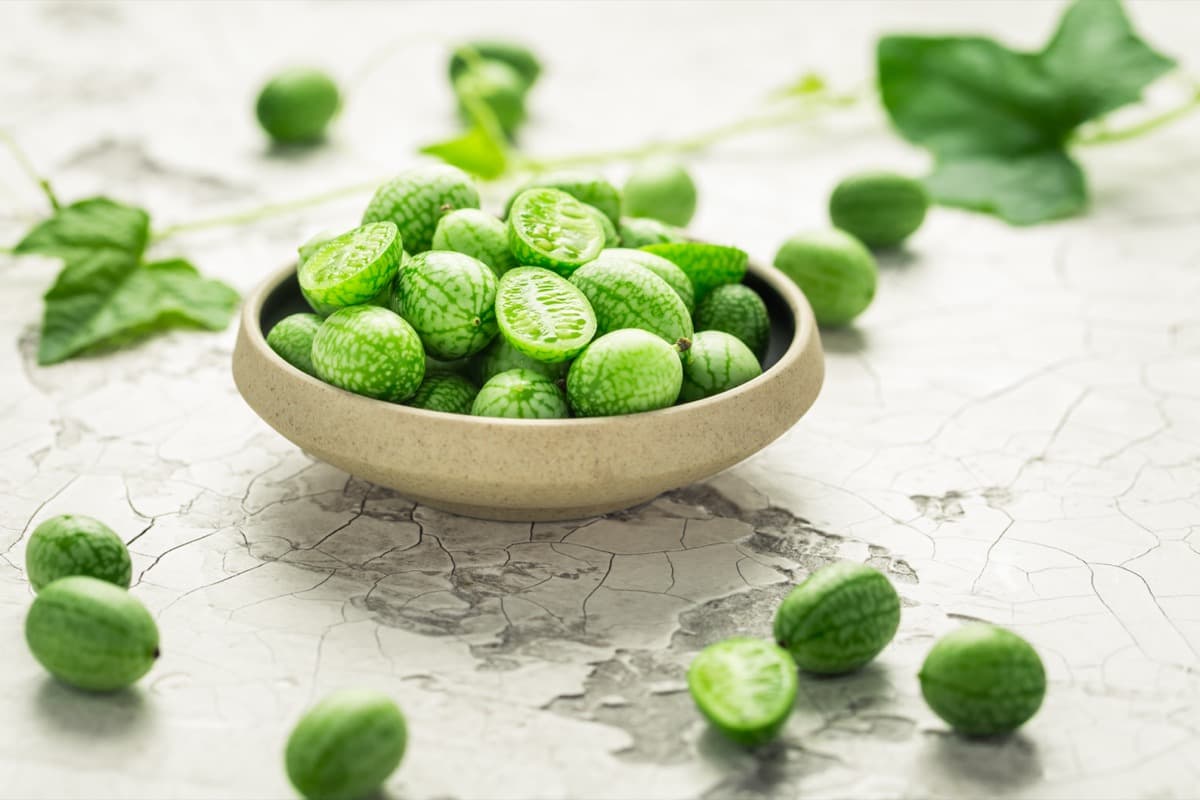
Spacing Requirement for Optimal Growth of Mexican Sour Gherkins
- The space between your plants is crucial for the optimal growth of Mexican Sour Gherkins. These plants require full sun, nutrient-rich soil, and plenty of room to spread their vines. Planting them too closely together can stunt their growth or even cause disease.
- Regarding spacing, you should aim for 18 inches apart from each plant. This will ensure that they have enough room to grow and develop without competing with one another for nutrients.
- If you’re growing in a raised bed or container garden, make sure to use high-quality soil that’s been enriched with compost or other organic matter. This will provide the necessary nutrients that your cucamelons need to thrive.
- For those planting in-ground gardens, mixing organic matter into the soil before planting will also improve drainage and aeration, which is essential for healthy cucumber growth.
- Proper spacing is key when it comes to growing Mexican Sour Gherkins successfully. You’ll enjoy an abundant harvest of these delicious little fruits throughout the season by giving them enough room and providing nutrient-rich soil through raised beds/containers or ground mixtures rich in organic matter.
Water Requirement for Mexican Sour Gherkins Growth
- Water is a crucial element in the growth and development of Mexican Sour Gherkins. It is essential to ensure that this plant receives enough water, especially during the hot and dry summer months. When watering cucamelons, ensure the soil stays moist but not overly saturated.
- It’s best to water your plants early in the morning or late in the evening when temperatures are cooler, as this will help prevent evaporation. You can also use mulch around your plants to help retain moisture in the soil.
- Avoid overhead watering when watering your Mexican Sour Gherkin plants, which can increase disease susceptibility. Instead, opt for drip irrigation or a soaker hose system at ground level.
- Watch your Mexican Sour Gherkin plants for signs of overwatering or underwatering. Overwatered plants may have yellow leaves, while underwatered ones may wilt and have brown edges on their leaves.
How Do You Germinate Mexican Sour Gherkin Seeds?
- Starting your Mexican Sour Gherkin farming venture begins with properly germinating its seeds. One effective way to ensure you don’t damage delicate roots is by using biodegradable pots. These will decompose naturally, allowing for a seamless transfer when transplanting into your garden.
- Plant 2 to 3 seeds per pot about 1/2 inch deep in a sterile seed-starting mix. The soil should be kept moist at around 21°C until sprouts emerge.
- Once the sprouts are visible, choose one strong seedling and snip off any extra ones at their base level. This will allow for better nutrient absorption and promote healthier growth. Ensure your plants receive sunlight once ready to be transplanted outside or transferred into larger containers. You can also add organic matter to boost nutrients in the soil during this time.
Mexican Sour Gherkin Plant Care
- Choose the right location: Selecting the perfect location for your Gherkin farm is crucial. The site should have good soil drainage and receive plenty of sunlight.
- Prepare the soil: Before planting your Gherkin seeds, you must use a tiller or hoe to loosen them up. Then add manure or compost to enrich the soil.
- Watering your plants: You must water your plants regularly; never let them dry out completely, as they require consistent moisture levels.
- Adding support structures: As vines grow taller, consider adding trellises or stakes to provide support structures for their growth so they don’t fall over due to weight
- Fertilizing your plants: To ensure healthy growth and vigorous fruit production on these plants, use balanced fertilizer during the growing season at least once every two weeks.
- Harvest your crop– Harvest daily picking only fruits which are green and unripe, avoiding yellowish ones which indicate ripeness
In case you missed it: Best Regenerative Agriculture Practices Every Grower Should Follow and Why It Is Important
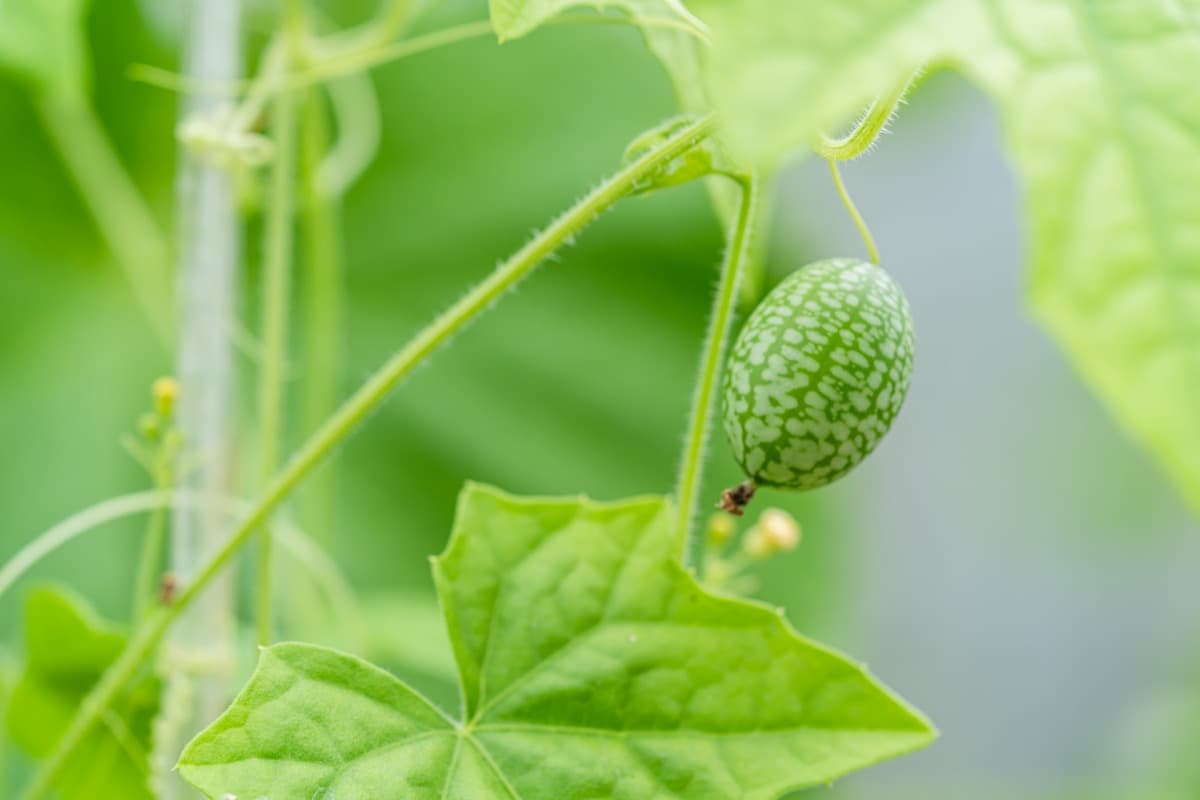
Pruning for Healthy and Productive Mexican Sour Gherkin Plants
By removing dead or damaged leaves, stems, and flowers, you can promote new growth while preventing the spread of disease. To begin pruning, examine each plant for any signs of damage or disease. Be sure to remove any discolored or wilted leaves and branches that are overcrowding the main stem. Next, focus on shaping the plant by removing any shoots growing from the plant’s base. This will encourage upward growth and prevent your plants from becoming too bushy. Be sure to remove any tendrils wrapping around nearby plants or structures.
Common Pests and Plant Diseases in Mexican Sour Gherkin Plants
- As with all crops, Mexican Sour Gherkin plants are susceptible to various pests and plant diseases. However, your crop can be healthy and thriving with the right precautions and treatments.
- One common pest that affects cucumbers is the cucumber beetle. These small yellow or black beetles feed on the leaves of the plant as well as its fruit. They can be controlled by using row covers or insecticides.
- Another harmful pest is spider mites, which suck sap from leaves, causing them to turn brown and fall off. You can prevent an infestation by keeping humidity levels low around your plants.
- Powdery mildew is another issue that can affect your Mexican Sour Gherkins. This fungal disease appears as a white powdery substance on leaves and stems. To treat it, remove any infected plant parts and avoid watering in the evening when moisture lingers longer.
How to Grow Mexican Sour Gherkin in Pots?
- It is an excellent option for those with limited space or living in urban areas. You can grow these small fruits properly on your balcony or terrace.
- Choose a pot at least 12 inches deep and wide to allow the roots enough room to grow. Fill the container with nutrient-rich soil mixed with organic matter like compost.
- Plant the seedlings about two inches deep into the soil and ensure they are spaced 18 inches apart. Please place them in a sunny spot where they can receive up to six hours of sunlight daily.
- Water regularly, but avoid over-watering as it can lead to root rot. Fertilize every 2 weeks during the growing season using a balanced fertilizer. Mexican Sour Gherkins are heavy feeders, which will help ensure healthy growth and abundant harvests.
In case you missed it: How to Grow Grapes Organically in Maharashtra: Step-By-Step Cultivation Process and Production Management
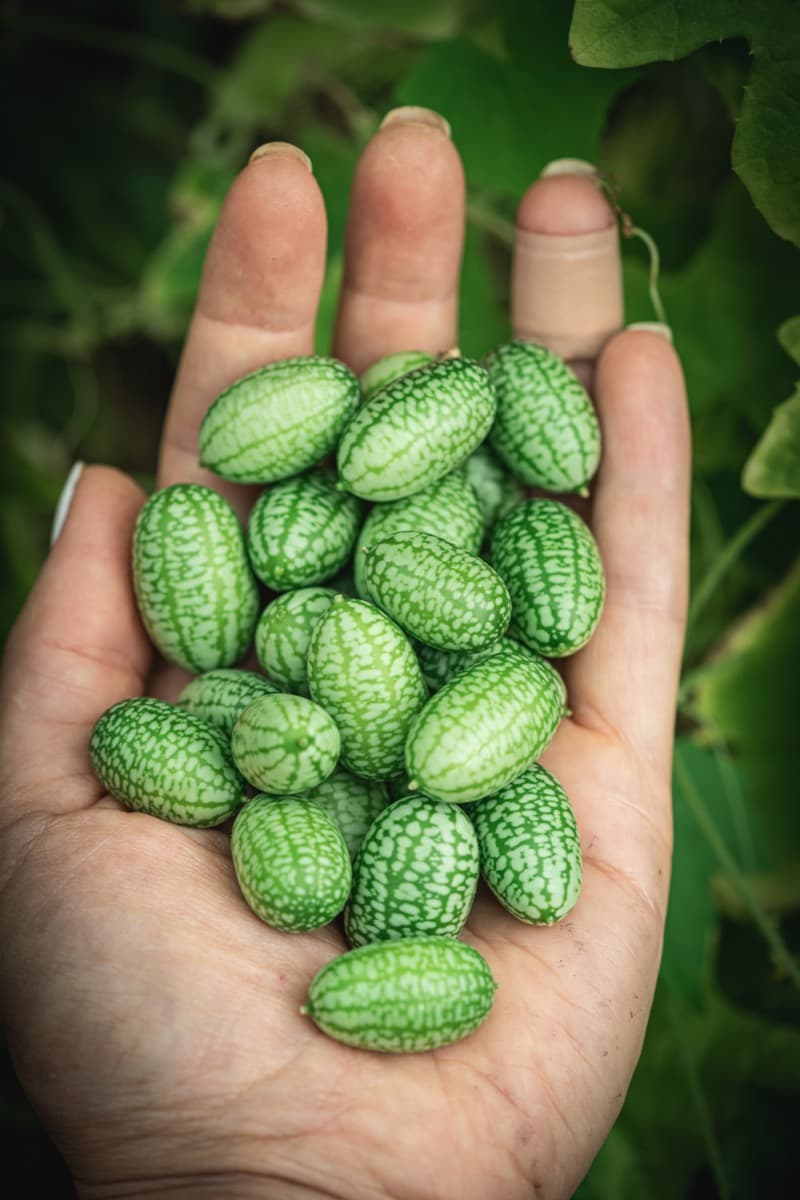
Mexican Sour Gherkin Growing Problems
Mexican Sour Gherkin is a unique crop to grow, but like any other plant, it can face several growing problems. One of the most common issues many farmers face is pests and diseases. The Mexican Sour Gherkins are susceptible to several pests, including spider mites, aphids, and whiteflies. It’s crucial to watch these pests as they can quickly spread throughout the entire crop. Another problem that may arise when growing Mexican Sour Gherkins is watering. Overwatering or underwatering your plants can adversely affect their growth and development.
These plants require a consistent water supply; hence, ensuring adequate soil moisture is essential without making them soggy. Furthermore, insufficient sunlight exposure may hinder the growth of Mexican Sour Gherkins. Ensure you place them in areas with direct sunlight for at least 6 hours daily. Lastly, one vital aspect farmers need to consider when cultivating this plant is proper fertilization. Inadequate nutrient levels in the soil will lead to stunted growth and weak vines that might not support all its fruits.
When and How to Harvest Mexican Sour Gherkins?
To harvest your cucamelons, snap or cut the stem above the fruit. Be careful not to damage any nearby vines in the process. Inspect each plant and pick the ripe Gherkins by gently twisting and pulling them off the vine. Be sure not to pull too hard, which might damage the plant. When the Gherkins reach about 1-2 inches long and have a bright green color, it’s time to start picking. To harvest, snap off the fruit from the stem or use scissors to cut them away.
In case you missed it: Growing Moringa Organically in Tamilnadu: Cultivation Practices and Production Management
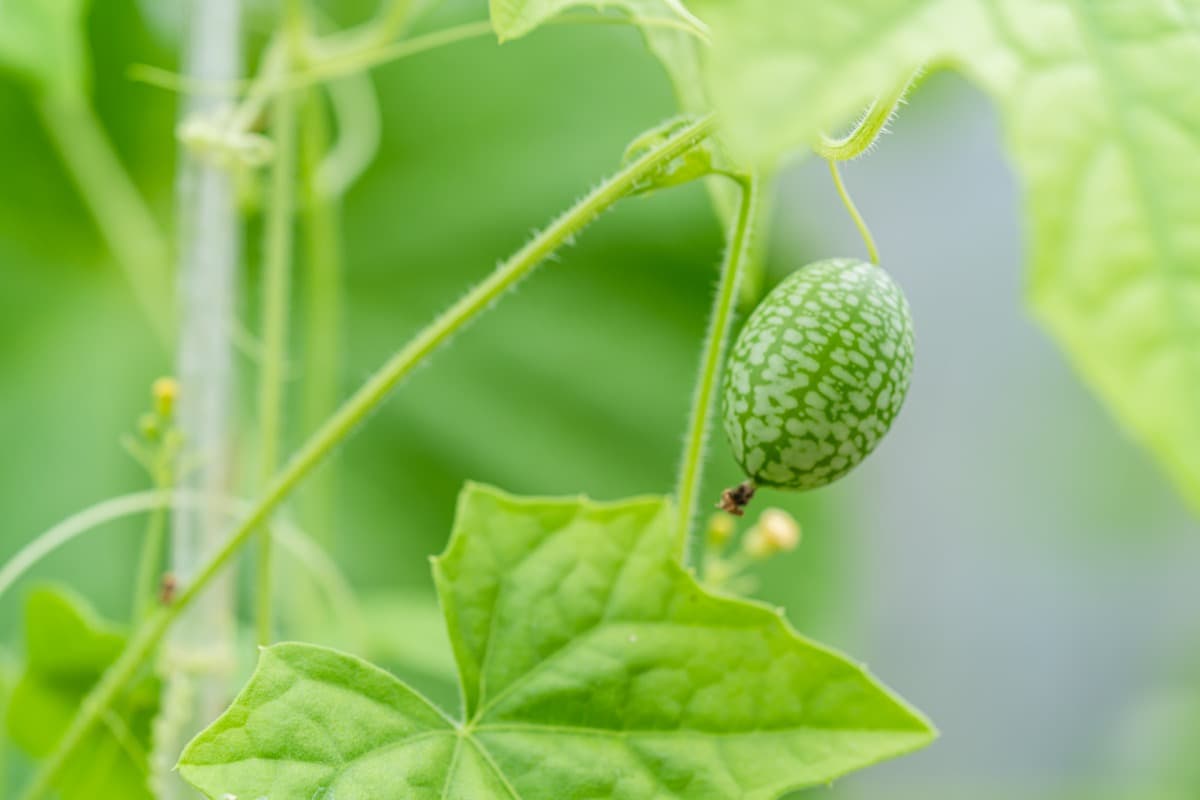
Conclusion
Growing Mexican Sour Gherkins is surprisingly easy, making them a great option for beginners and experienced gardeners. These fruits are incredibly easy to grow in most climates and require minimal maintenance.
- Types of Pesticides Used in Agriculture: A Beginner’s Guide
- Economical Aquaculture: A Guide to Low-Budget Fish Farming
- 15 Common Planting Errors That Can Doom Your Fruit Trees
- How to Make Houseplants Bushy: Effective Tips and Ideas
- Innovative Strategies for Boosting Coconut Pollination and Yield
- Pollination Strategies for Maximum Pumpkin Yield
- The Complete Guide to Chicken Fattening: Strategies for Maximum Growth
- Natural Solutions for Tulip Problems: 100% Effective Remedies for Leaf and Bulb-Related Issues
- Revolutionizing Citrus Preservation: Towards a Healthier, Greener Future
- Natural Solutions for Peony Leaf and Flower Problems: 100% Effective Remedies
- Maximizing Profits with Avocado Contract Farming in India: A Comprehensive Guide
- Natural Solutions for Hydrangea Problems: 100% Effective Remedies for Leaf and Flowers
- The Ultimate Guide to Choosing the Perfect Foliage Friend: Bringing Life Indoors
- From Sunlight to Sustainability: 15 Ways to Use Solar Technology in Agriculture
- The Ultimate Guide to Dong Tao Chicken: Exploring from History to Raising
- The Eco-Friendly Makeover: How to Convert Your Unused Swimming Pool into a Fish Pond
- Mastering the Art of Delaware Chicken Farming: Essentials for Healthy Backyard Flocks
- 20 Best Homemade Fertilizers for Money Plant: DIY Recipes and Application Methods
- How to Craft a Comprehensive Free-Range Chicken Farming Business Plan
- Brighten Your Flock: Raising Easter Egger Chickens for Beauty and Bounty
- How to Optimize Your Poultry Egg Farm Business Plan with These Strategies
- Subsidy for Spirulina Cultivation: How Indian Government Schemes Encouraging Spirulina Farmers
- Ultimate Guide to Raising Dominique Chickens: Breeding, Feeding, Egg-Production, and Care
- Mastering the Art of Raising Jersey Giant Chickens: Care, Feeding, and More
- Ultimate Guide to Raising Legbar Chickens: Breeding, Farming Practices, Diet, Egg-Production
- How to Raise Welsummer Chickens: A Comprehensive Guide for Beginners
- How to Protect Indoor Plants in Winter: A Comprehensive Guide
- Ultimate Guide to Grow Bag Gardening: Tips, Tricks, and Planting Ideas for Urban Gardeners
- Guide to Lotus Cultivation: How to Propagate, Plant, Grow, Care, Cost, and Profit
- Agriculture Drone Subsidy Scheme: Government Kisan Subsidy, License, and How to Apply Online
- Ultimate Guide to Raising Araucana Chickens: Breed Profile, Farming Economics, Diet, and Care
- Bringing Hydroponics to Classroom: Importance, Benefits of Learning for School Students
- Ultimate Guide to Raising Polish Chickens: Breed Profile, Farming Economics, Diet, and Care
- Ultimate Guide to Raising Australorp Chickens: Profile, Farming Economics, Egg Production, Diet, and Care
- Silkie Chicken Farming: Raising Practices, Varieties, Egg Production, Diet, and Care
- Sussex Chicken Farming: Raising Practices, Varieties, Egg Production, Diet and Care